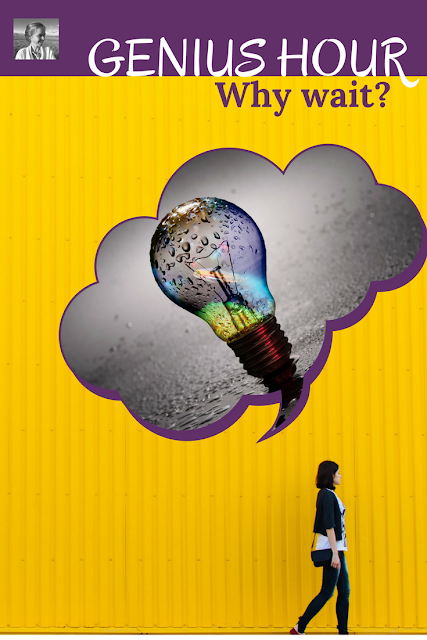Getting Started with Genius Hour
Please note that the content of this page was taken directly from the Spark Creativity blog written by Betsy Potash. Any first person pronouns refer to the author.
What is Genius Hour?
The Issue of Standards
Fitting Genius Hour Into Your Schedule
You can do a miniature genius hour in just a couple of days, or expand it to go on for an entire term or year. It’s up to you. I’ll be sharing more about shorter term genius hours with a more specific structure later on, in the special section for middle school ELA.
Basic Structure
Project Examples
Case Study (Secondary ELA)
Grading
Most people seem to agree with Laura Randazzo that grading the process is what counts. Choose your benchmarks and grade students on their effort and follow-through, not on their results. Anyone who tries anything is going to fail sometimes, so help your students with their growth mindset and honor those failures as worthy efforts that become valuable research.
